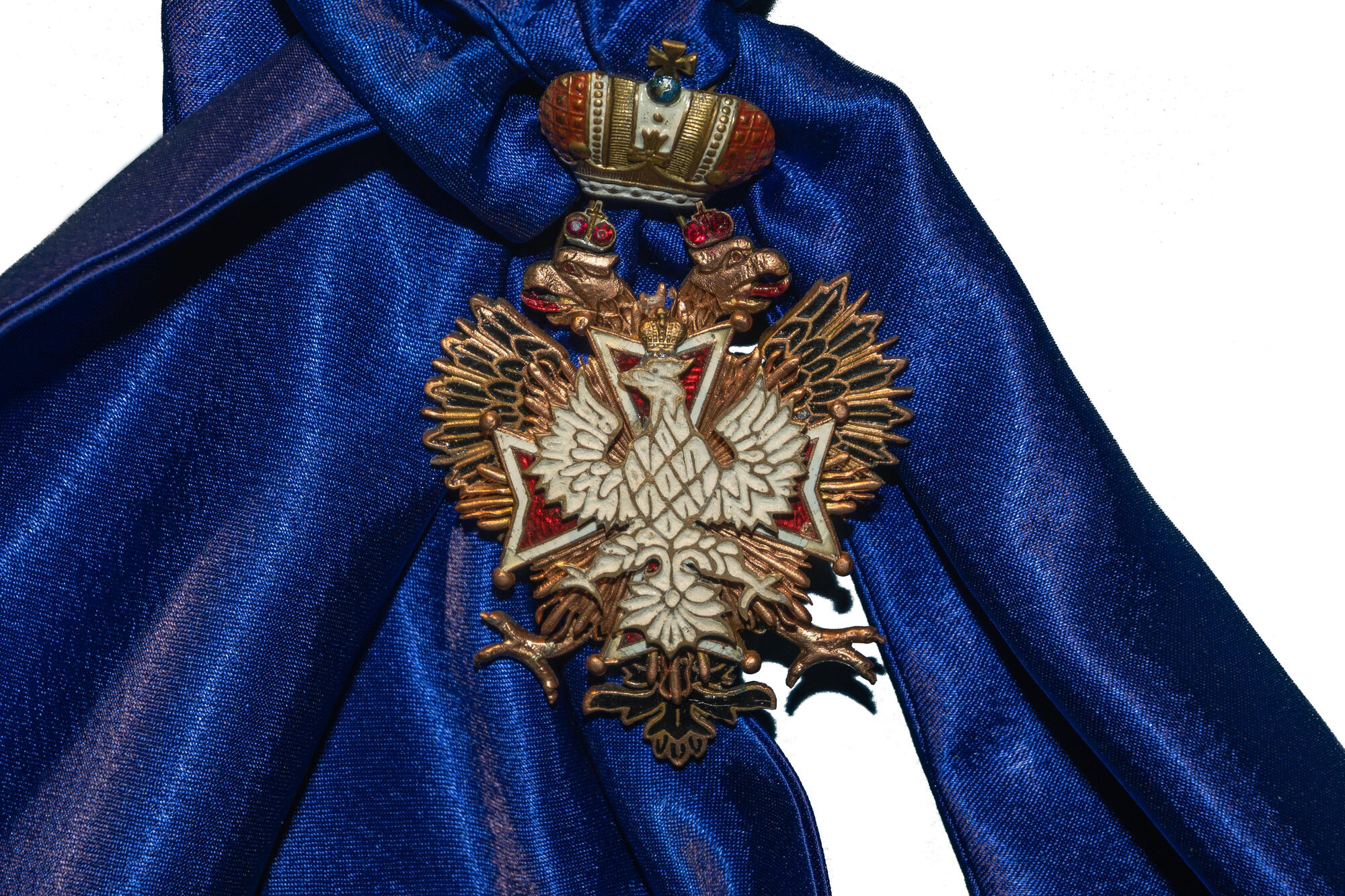The collection of the museum contains the Cross of the Order of the White Eagle. A similar order was received in 1855 by Admiral Pavel Stepanovich Nakhimov for services during the defense of Sevastopol in 1854–1855 — his last lifetime award.
The Order of the White Eagle is considered one of the oldest Polish orders. It was founded by the Polish King August II in 1705. It was awarded mainly to foreigners — August’s allies in the war against Sweden. In Russia, Tsar Peter I and his associates became holders of the Polish Order of the White Eagle. In 1795, The Polish-Lithuanian Commonwealth ceased to exist as a sovereign state and the order was abolished.
In 1807, after the conclusion of the Treaties of Tilsit, Emperor Napoleon I formed a part of the Polish lands into the Duchy of Warsaw and restored the old Polish orders. Formally, the Saxon king Frederick Augustus became the head of the Duchy. Napoleon allowed him to be called the King of Poland and the Grand Master of all Polish orders. However, when the French emperor was defeated in the Patriotic War of 1812, all Polish orders were abolished.
In 1815, Emperor Alexander I proclaimed himself the King of Poland and in one of the articles of the Constitutional Law of the Kingdom of Poland announced: “Polish military and civil orders… are preserved.” Initially, those awards were given only to Poles.
In 1831, Nicholas I suppressed the Polish uprising and deprived Poland of autonomy. The Order of the White Eagle was included in the awards of the Russian Empire. In 1835, it took an honorable place in the hierarchy of Russian awards and settled down after the Order of St. Alexander Nevsky. It was awarded to persons not lower than the 4th class in the Table of Ranks — a formal list of positions and ranks in the military, government, and court of Imperial Russia.
The motto of the order was “For Faith, King and Law”. Initially, it was cast from gold and covered with enamel. The basis of the order was the image of a two-headed eagle. Over it, there was a white one-headed one enclosed in a cross. Above them was the red Russian crown.
Such an order was worn at the right hip with a blue moire ribbon thrown over the left shoulder. In addition to it, an eight-pointed gold star was issued. On August 5, 1855, by decree of the emperor, the image of crossed swords was added to the Order of the White Eagle. It was placed above the crown of the order and in the middle of the star.
The Order of the White Eagle is considered one of the oldest Polish orders. It was founded by the Polish King August II in 1705. It was awarded mainly to foreigners — August’s allies in the war against Sweden. In Russia, Tsar Peter I and his associates became holders of the Polish Order of the White Eagle. In 1795, The Polish-Lithuanian Commonwealth ceased to exist as a sovereign state and the order was abolished.
In 1807, after the conclusion of the Treaties of Tilsit, Emperor Napoleon I formed a part of the Polish lands into the Duchy of Warsaw and restored the old Polish orders. Formally, the Saxon king Frederick Augustus became the head of the Duchy. Napoleon allowed him to be called the King of Poland and the Grand Master of all Polish orders. However, when the French emperor was defeated in the Patriotic War of 1812, all Polish orders were abolished.
In 1815, Emperor Alexander I proclaimed himself the King of Poland and in one of the articles of the Constitutional Law of the Kingdom of Poland announced: “Polish military and civil orders… are preserved.” Initially, those awards were given only to Poles.
In 1831, Nicholas I suppressed the Polish uprising and deprived Poland of autonomy. The Order of the White Eagle was included in the awards of the Russian Empire. In 1835, it took an honorable place in the hierarchy of Russian awards and settled down after the Order of St. Alexander Nevsky. It was awarded to persons not lower than the 4th class in the Table of Ranks — a formal list of positions and ranks in the military, government, and court of Imperial Russia.
The motto of the order was “For Faith, King and Law”. Initially, it was cast from gold and covered with enamel. The basis of the order was the image of a two-headed eagle. Over it, there was a white one-headed one enclosed in a cross. Above them was the red Russian crown.
Such an order was worn at the right hip with a blue moire ribbon thrown over the left shoulder. In addition to it, an eight-pointed gold star was issued. On August 5, 1855, by decree of the emperor, the image of crossed swords was added to the Order of the White Eagle. It was placed above the crown of the order and in the middle of the star.


